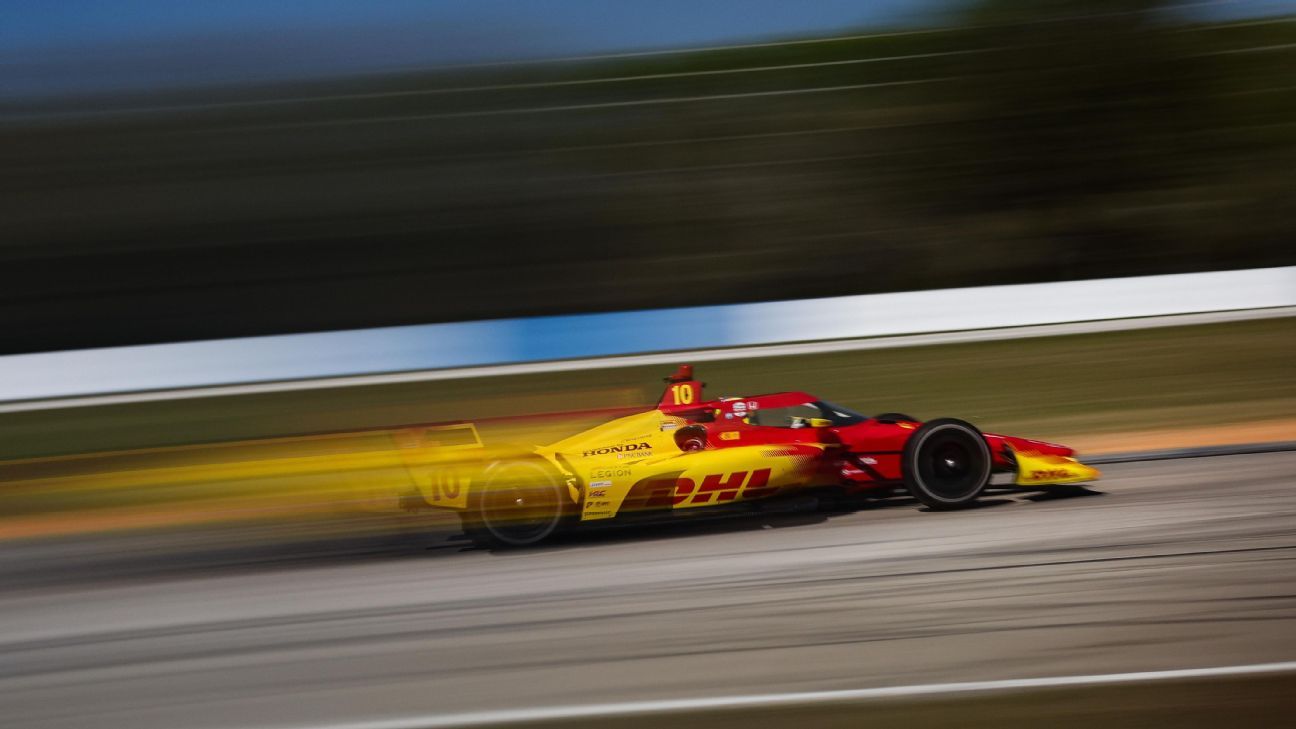Products You May Like
Will the Chip Ganassi Racing and Team Penske steamroller effect continue into another season of IndyCar racing? We’re about to find out as the American open-wheel championship launches into another run that starts this weekend in Florida, heads west to California and Oregon, weaves throughout the Midwest, and ends its 18-round journey in September on a southern oval in Tennessee.
Using history as our guide, breaking the Ganassi and Penske stranglehold is about as likely as Red Bull and Max Verstappen being beaten to the next Formula One title. Every IndyCar champion since 2013 has hailed from the series’ two titans, and if we wind the clock back to 2008, the combination of Ganassi and Penske have only been beaten once — by Andretti Global in 2012 — in the past 15 years.
For those who’ve felt the exhaustion of Red Bull’s recent F1 domination, spare a thought for IndyCar’s long-suffering fans who dream of a day when the crown is placed on someone other than Chip or Roger.
Dreams aside, as the defending champs with Álex Palou, Ganassi is the favorite to repeat with the mercurial Spaniard. And yes, that’s the same Álex Palou who’s being sued for at least $23 million for allegedly breaching a binding contract to drive for Arrow McLaren in 2024. The same Álex Palou who ignored that imposing threat on his way to winning last year’s IndyCar title — his second championship in a span of three seasons.
The eight-figure lawsuit from McLaren would rattle most drivers, but the 26-year-old hasn’t buckled under the pressure. With Palou’s supreme driving skills and mental fortitude to rely upon, plus his pole-winning run last May at the Indianapolis 500, Ganassi is the team to beat with Palou at the tip of its spear. Palou’s 43-year-old teammate Scott Dixon placed second in last year’s championship.
The six-time title winner is in the twilight of his IndyCar career, and yet, the New Zealander is always a threat to reach victory lane and vie for another championship. For those who root for Aston Martin’s Fernando Alonso to humble the younger F1 generation, Dixon is that driver in IndyCar, and he’ll have another 43-year-old in Team Penske’s Will Power joining him in the quest to keep the kids at bay and score another title.
Dixon’s most recent championship was produced in 2020 and Power secured the title — his second — in 2022, which should dispel any notion that speed diminishes with age.
After Palou, Dixon and Power, we have the latter’s Penske teammate Josef Newgarden from Tennessee, who was a monster last season, winning four races — all topped by capturing his first Indy 500. Inconsistency blighted his effort in the latter stages of the season, though, and he was overtaken by stablemate Scott McLaughlin, who charged to third in the standings as Newgarden fell to fifth.
The Kiwi has become Penske’s secret weapon, an ultra-reliable race winner and front runner for the team. McLaughlin is a dark horse favorite to get behind, and then there’s IndyCar’s most popular driver, Pato O’Ward from Arrow McLaren. The man from Monterrey, Mexico had a strange 2023 in which he went winless, but thanks to a near-permanent residency on IndyCar podiums, he earned enough points to place fourth in the standings. Nobody is hungrier than O’Ward to end the winless streak and show the title favorites that he’s capable of spoiling their plans.
Colton Herta is another young ace on a yearlong winless stretch, and the Californian’s teammate Kyle Kirkwood — the only driver to win for Michael Andretti last season with the Floridian’s pair of street race victories — welcome a new member into the Andretti fold in 2022 Indy 500 winner Marcus Ericsson from Sweden.
That makes four of IndyCar’s ten full-time teams capable of vying for the championship, which speaks to the tight racing the series has to offer.
“I think it’ll be an eight-car championship showdown,” O’Ward told ESPN. “You’ve got to expect two Ganassis, two McLarens, two Penskes and two Andrettis to be in there at the end. I don’t know which ones exactly, but I think the main ones will be from those four teams. I know we will be in the fight.”
O’Ward’s teammate Alexander Rossi, the 2016 Indy 500 winner from California, should also be in the conversation.
After the top four squads, though, Rahal Letterman Lanigan Racing is the only other organization with a realistic chance of winning a few races. After RLL, it’s a steep cliff into the midfield, where half of the teams fielding the 27 full-time entries are hoping to make a positive impression and pester the established teams on occasion.
When it comes to the IndyCar season that’s ahead, most of it is a continuation of what’s worked for many years, with a chassis and engine formula that dates back to 2012. Although the series failed to launch its hybrid engine package in time to start the season, it’s due to debut in summer, most likely at the Mid-Ohio road course in July.
There would be seven races left to run at that point, which, if you like dramatic wrinkles, could affect the championship if the new hybrid technology brings random failures to the otherwise-bulletproof cars. It’s a gamble that IndyCar is willing to take, but there are concerns about how going hybrid in the middle of a season might turn the drivers’ standings on its head.
“Well, those are the four teams and two drivers each that I think will be in the championship until the hybrid comes,” O’Ward added. “But who can really say what will happen after that? You just hope it isn’t you if there are problems, right? Then other people might start falling away. It’s a long year ahead, filled with challenges. That’s what an IndyCar season is.”
